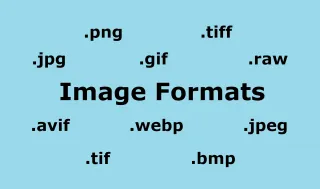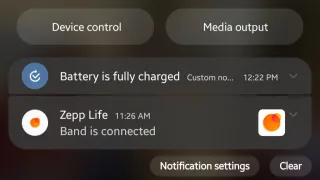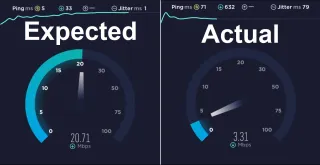A look at image formats

If you ever taken a photo or downloaded an image, you might have seen .jpg/.jpeg or one of the other images formats out there. You might even have wondered why there's so many formats and what are they used for
Different formats
There's a lot of image formats out there, so let's take a look at some of the most common image formats out there and what they're used for| Format | Extensions | Details |
| JPEG | .jpg, .jpeg | One of the most well known image formats out there, is the JPEG (.jpg, .jpeg) format. JPEG stands for Joint Photographic Experts Groups |
| TIFF | .tif, .tiff | TIFF stands for Tagged Image File Format |
| Bitmap | .bmp | Microsoft created Bitmap (.bmp) for use in Windows and is a proprietary format. It doesn't compress the images, so no information is loss. Which also means the images can become really large. BPM stands for Bitmap Image File |
| WEBP | .webp | WEBP is an image format developed by Google for the internet, to reduce file size and the same time keep the image quality as high as possible. Most images you see on this site, is in WEBP format |
| GIF | .gif | GIF stands for Graphics Interchange Format |
| PNG | .png | PNG stands for Portable Network Graphics files |
| RAW | .raw, .cr2, .nef, .orf, .sr2, and more | RAW images files (.raw, .cr2, .nef, .orf, .sr2, and more) are used in cameras and scanners, to retain as much information as possible and is mostly intended for profession use. The files get very large, since there's so much information stored. If you're going to edit images, that's when RAW shines. As it stores so much information, you have lots of options when it comes to adjustments. Then when any adjustments is completed, the image is normally exported to one of the other image formats (JPEG/WEBP/PNG/etc), depending on what it will be used for |
Why have different formats?
As you can see from the different formats above. Some have distinct reasons to exist, some try to replace older formats and some exist for proprietary reasonsAs technology move forward, new solutions are invented that pushes solutions forward. But the rollout of this "improved" format can be slow and by the times they've matured, a new format might already be out that's overtaking it
jpeg was design to overtake older larger format, to allow storing smaller images and as it's been so widespread used, it's also been hard to overtake
Then you have other formats, such as raw that exist in it's own right and is mainly used by professionals. As the files can be enourmous, but it stores a lot of image information without information loss and is perfect for when you'll edit images later in an image editing tools such as Photoshop and GIMP









